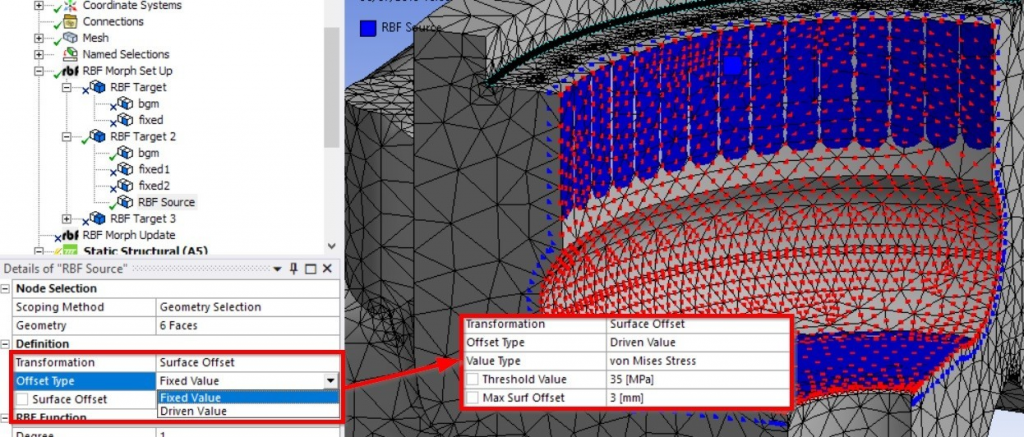Optimisation of industrial parts by mesh morphing enabled automatic shape sculpting
Radial basis functions (RBF) mesh morphing is a well established approach to quickly update an existing finite element analysis (FEA) mesh so that new shapes can be adapted and related performances explored. The RBF in fact allow to adapt the volume mesh maintaining a good quality even for substantial changes of the shape. New shapes imposed at FEA domain borders can be controlled by direct parameters (mesh based or CAD based) or by deformation fields resulting from the physics.
With automatic surface sculpting, the morphing action can be guided by the physics of the model that is being analyzed, allowing engineers to automatically identify the surface zones whose nodes should be moved inwards or outwards to achieve the optimization objective, saving on the time required to complete an optimization process.
In this joint work with Sacmi we explore how the last approach can be exploited according to two different strategies: the biological growth method (BGM), which consists in adding/removing material according to the local stress at surface and the adjoint method, which consists in moving inward outward the surface according to the surface sensitivities.
The FEA solver ANSYS® MechanicalTM in combination with the mesh morphing software RBF MorphTM was adopted forthis purpose. The BGM implementation is the one implemented in RBF Morph, the adjoint solver is the one implemented in the topological optimisation tool by ANSYS. Automatic shape sculpting applications are demonstrated on a simple geometry, a thick plate with simple load conditions, andon an industrial part.

The proposed optimization strategy involves the use of numerical simulations and consists of combining mesh morphing with one of two shape-modification approaches dictated by the physics of the model being analyzed, namely the Adjoint approach or the BGM approach.
Both automatic sculpting approaches were used to optimize the component’s stress levels.
The Adjoint-based approach was successfully applied to the area identified and resulted in a maximum stress reduction of 11.6% on the surface shown.

